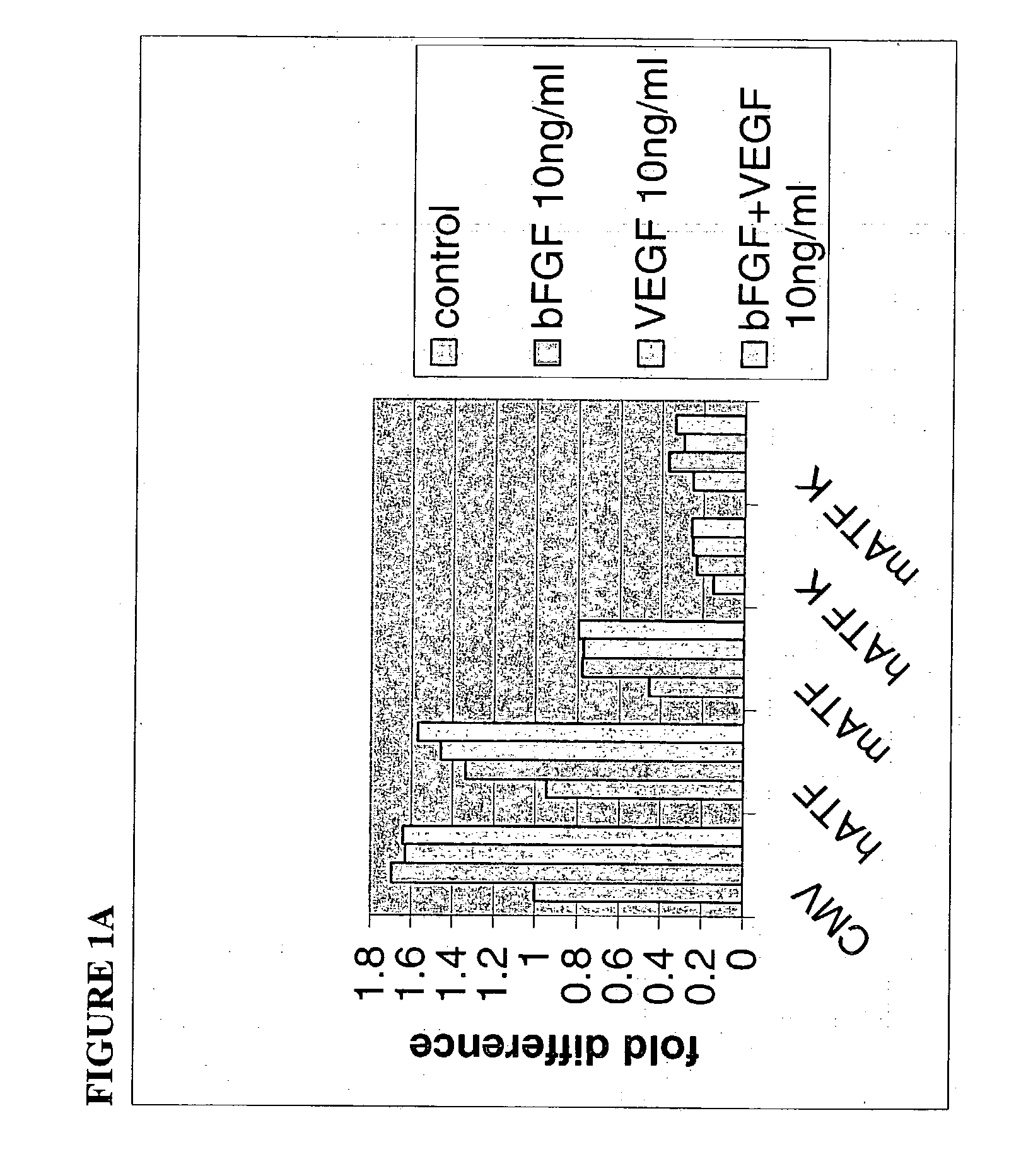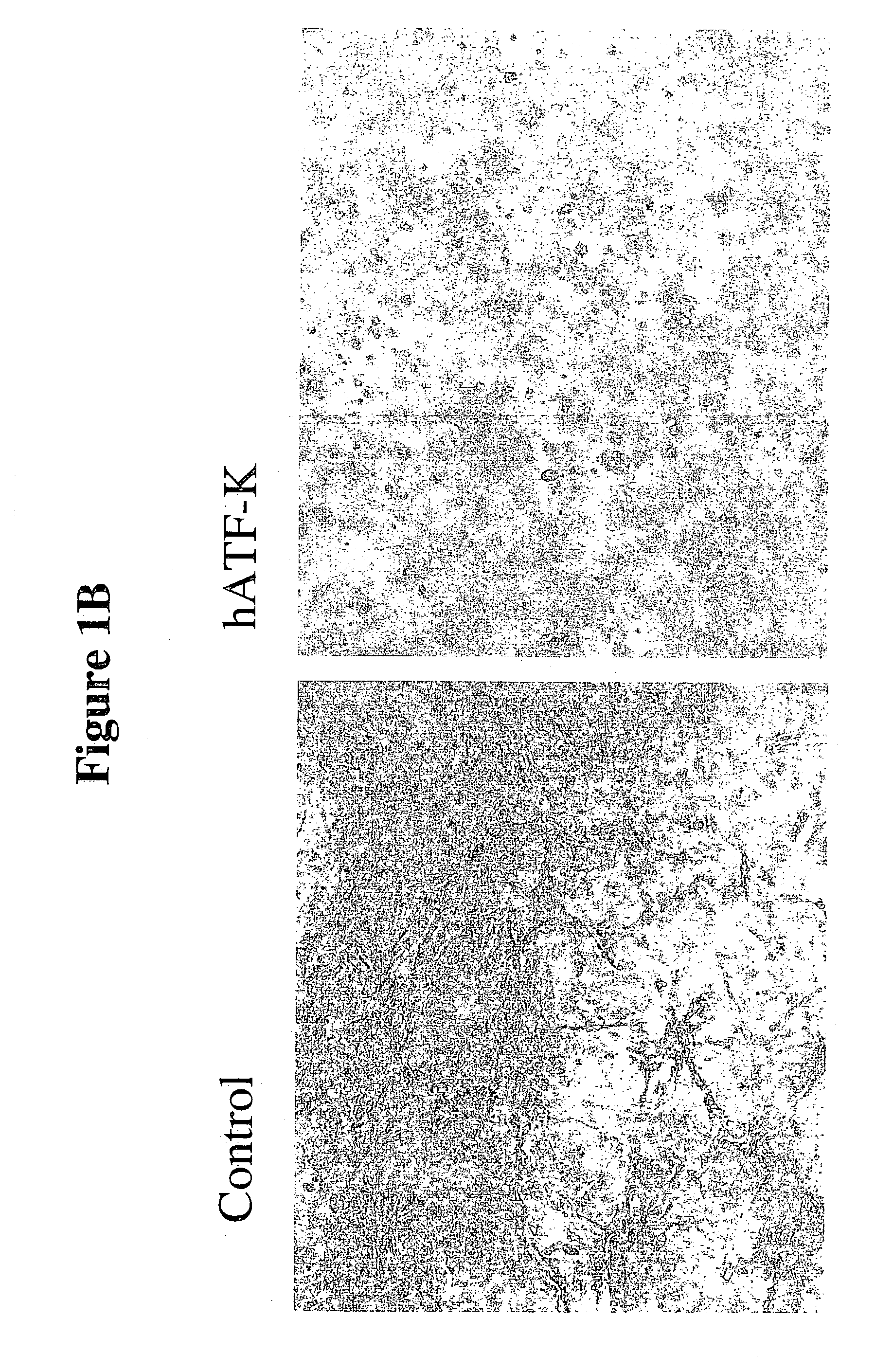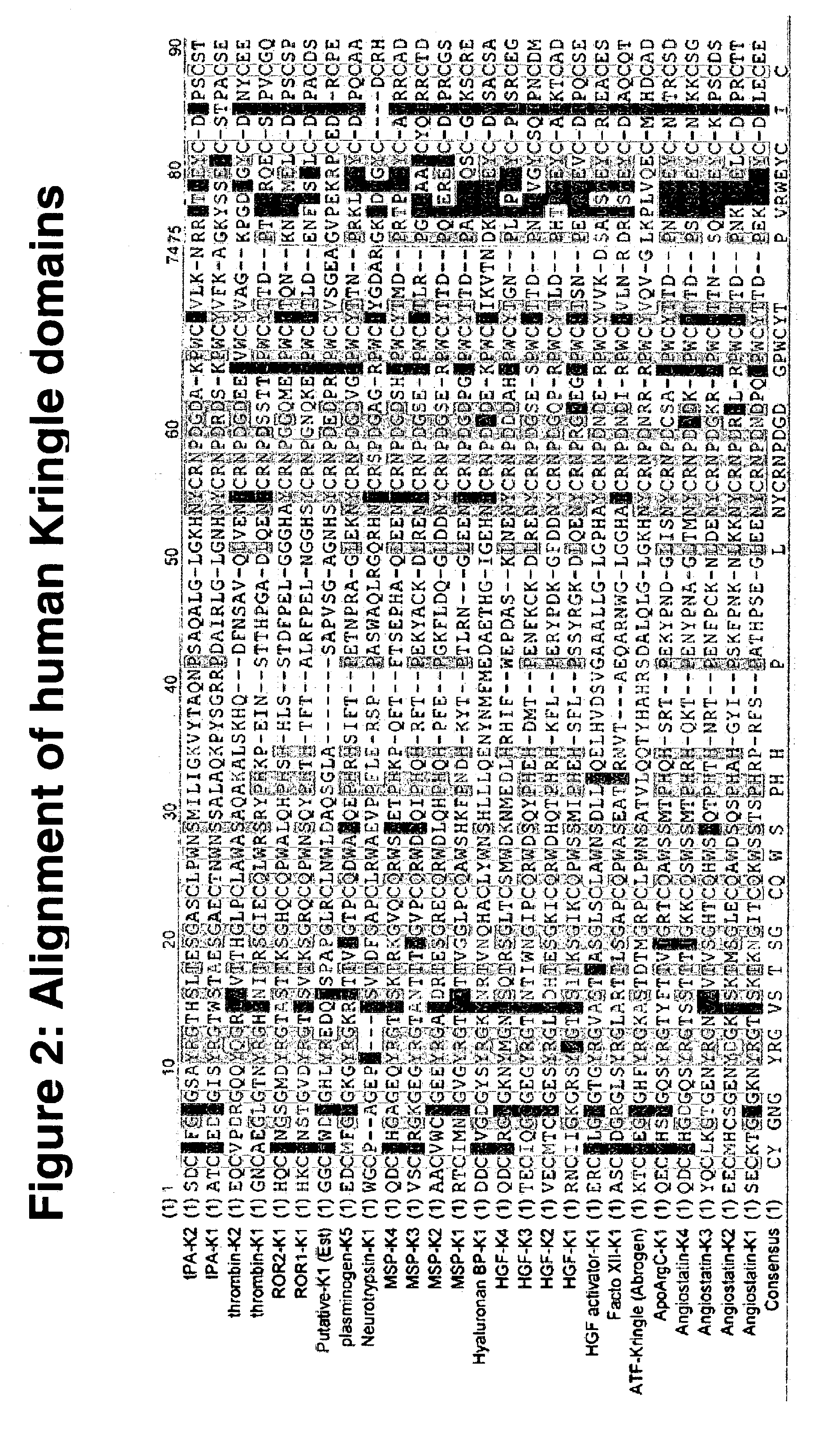Abrogen polypeptides, nucleic acids encoding them and methods for using them to inhibit angiogenesis
a technology of angiogenesis and nucleic acids, applied in the direction of peptide/protein ingredients, peptide/protein fragmentation, depsipeptides, etc., can solve the problems of small heterologous peptides recombinantly for effective research and therapeutic use, skewing the test, and almost useless for screening purposes in biological or biochemical assays
- Summary
- Abstract
- Description
- Claims
- Application Information
AI Technical Summary
Benefits of technology
Problems solved by technology
Method used
Image
Examples
example 1
Cloning and Manipulating Abrogen Nucleic Acids
[0121] Exemplary primary nucleotide and polypeptide structures for both the mouse and human abrogens sequences are shown below.
1 Amino acid sequence of human abrogen N43 ktc yeg ngh fyr gka std tmg rpc lpw nsa tvl qqt yha hrs nal qlg SEQ ID NO.: 1 lgk hny crn pdn rrr pwc yvq vgl kpl vqe cmv hdc ad Nucleotide sequence of human abrogen N43 aaaacctgct atgaggggaa tggtcacttt taccgaggaa aggccagcac tgacaccatg SEQ ID NO.: 2 ggccggccct gcctgccctg gaactctgcc actgtccttc agcaaacgta ccatgcccac agatctaatg ctcttcagct gggcctgggg aaacataatt actgcaggaa cccagacaac cggaggcgac cctggtgcta tgtgcaggtg ggcctaaagc cgcttgtcca agagtgcatg gtgcatgact gcgcagat Amino acid sequence of mouse abrogen ktc yhg nyd syr gka ntd tkg rpc law nap avl qkp yna hrp dai slg SEQ ID NO.: 3 lgk hny crn pdn qkr pwc yvq igl rqf vqe cmv hdc sl Nucleotide sequence of mouse abrogen aaaacctgct atcatggaaa tggtgactct taccgaggaa aggccaacac tgataccaaa SEQ ID NO.: 4 ggtcggccct gcctggcctg gaatgcgc...
example 2
Proliferation Analysis of Transduced HUVEC Using Alamar Blue
[0130] A number of different assays for analyzing cell proliferation, tubule formation, cell migration, endothelial cell growth, and tumor metastasis exist. Some of them are described in the references cited.
[0131] Human umbilical vein endothelial cells (HUVEC: Clonetics, San Diego) are seeded at 5.times.10.sup.5 cells / well of 6-well-plate in EGM-2 medium. The cells are incubated overnight at 37.degree. C., 5% CO.sub.2. Endothelial Cell Basal Medium (EBM) and Endothelial Cell Growth Medium (EGM) are available (Clonetics, San Diego). The medium is aspirated off and 500 ul of ECM medium containing 100 IT / cell viruses put over cells. The cells are incubated at 37.degree. C. for 2 hours, then aspirated and 1.5 ml EGM-2 medium is added. The cells are again incubate overnight at 37.degree. C.
[0132] The cells are trypsinized, counted, and seeded at 2000cell / well of 96-well-plate in EGM-2 medium. The cells are incubated at 37.degr...
example 3
Assay of Transduced HUVEC Embedded in Fibrin Gel
[0134] In an assay that distinguishes the abrogen activity from angiostatin, human umbilical vein endothelial cells (HUVEC: Clonetics, San Diego) are seeded (passage 3, growing in EGM-2 medium) at 5.times.10.sup.5 cells / well of 6-well-plate in EGM-2 medium. The embedded cell assay also or alternatively provides data concerning the invasiveness of the endothelial cells in response to certain treatments. Endothelial cell tubule formation induced by pro-angiogenic factors such as FGF and VEGF, a characteristic measured by this assay, can be directly correlated to angiogenesis. The abrogen polypeptides used here can inhibit or reduce angiogenesis by inhibiting tubule formation. The use of virally transduced HUVEC can provide very detailed information as to the effects that a selected abrogen polypeptide or derivative has on primary cell types. The potential anti-angiogenic agents are introduced by transduction of the cells (m-ATF, h-ATF, ...
PUM
| Property | Measurement | Unit |
|---|---|---|
| volume | aaaaa | aaaaa |
| volume | aaaaa | aaaaa |
| volume | aaaaa | aaaaa |
Abstract
Description
Claims
Application Information
 Login to View More
Login to View More - R&D
- Intellectual Property
- Life Sciences
- Materials
- Tech Scout
- Unparalleled Data Quality
- Higher Quality Content
- 60% Fewer Hallucinations
Browse by: Latest US Patents, China's latest patents, Technical Efficacy Thesaurus, Application Domain, Technology Topic, Popular Technical Reports.
© 2025 PatSnap. All rights reserved.Legal|Privacy policy|Modern Slavery Act Transparency Statement|Sitemap|About US| Contact US: help@patsnap.com



